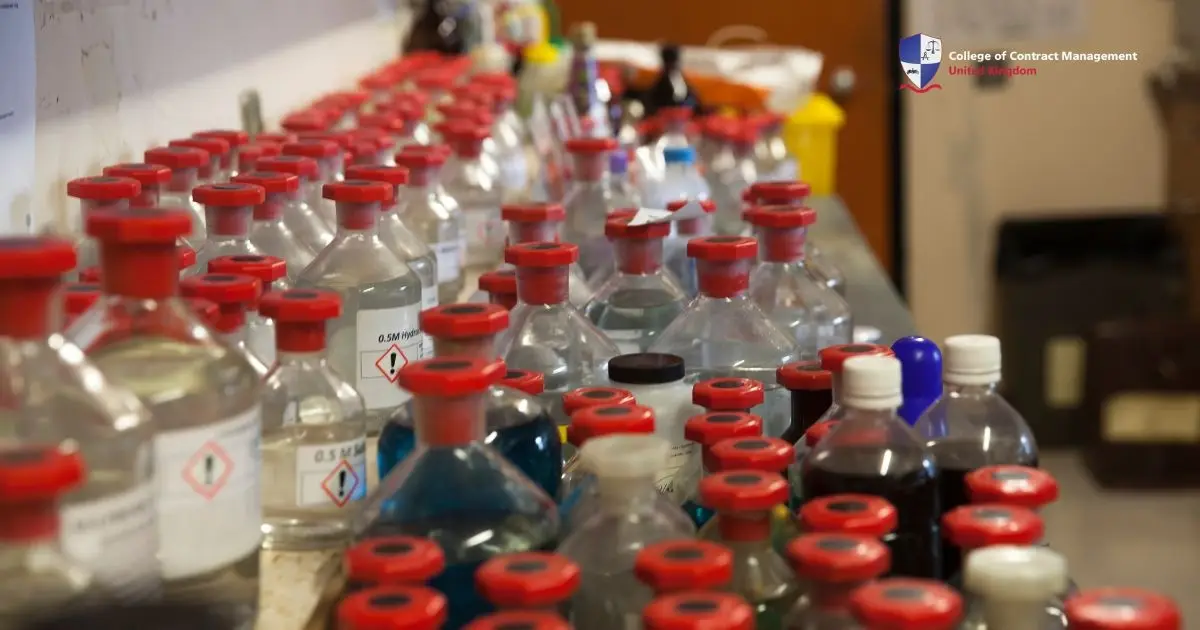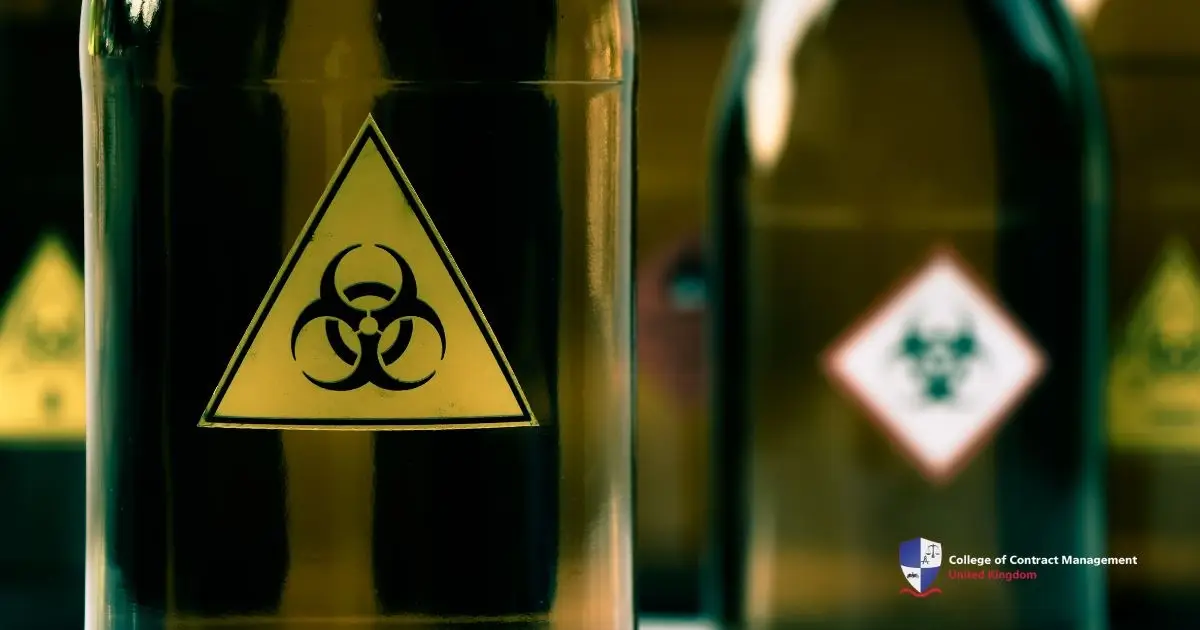Chemical substances are parts of people’s daily lives nowadays. Their functions are becoming common, from wall paints to detergents. Yet, the fact comes with a risk that may harm the health. This lays the ground for the creation of a COSHH cabinet to protect the public at affordable prices.
In this article, you will read why the COSHH cabinet is such an urgent need, so much so that the UK government introduced the 2022 COSHH Regulations. The rules state all workplaces must manage the risks so that the workers are safe while on their duties. Get more insights in the paragraphs that follow!
What is a COSHH cabinet?
The COSHH cabinet is a specially designed storage for keeping hazardous materials. COSHH itself stands for Control of Substances Hazardous to Health. It is actually a regulation from the UK government that requires employers to handle the materials carefully at the workplace. Moreover, this guideline also includes that they also need to train their staff about the risks and how to manage such substances.
The rule then stipulates that supervisors should make emergency attempts when chemicals leak or explode. On a regular basis, the employers need to check the items in the COSHH cabinets and then assess the risks related to them. Hazardous substances aren’t like other ordinary ones that look clear to human eyes.
For example, synthetic chemical substances, such as Polyurethane (PU), are invisible to people's eyes. It is used for glue and wall paint. Most people may seem fine with it, but others with skin allergies will find the compound a bit harmful. That’s why the COSHH cabinet needs a special place so that people with allergic issues will get a warning beforehand.
Features of a COSHH cabinet
The COSHH cabinet shouldn’t only be present in factories or offices that deal a lot with chemicals. Households can buy the storage if the owners realise they use products with toxic materials or gasses on a daily basis. Such applies to households whose members have allergic issues or other health problems, like respiratory disease.
The main material for a COSHH cabinet is steel, which comes in various thicknesses, from 0.7 mm to 1.5 mm. Each of the cabinet producers will adjust the chosen layer to the design and specifications. So, what are the features of the shelf that distinguish it from the others? Let’s check it out below!
Lockable doors
Every COSHH cabinet has lockable doors that provide access only to those with licenses. Usually, they are people with knowledge about the handling of harmful substances. If necessary, you can buy one with certain codes to lock and or unlock it. This serves as the solution to prevent anyone from accessing the storage.
Ventilation system
A COSHH cabinet usually has a ventilation system for harmful substances in the form of fumes, vapours, specks of dust, and mists. The storage type is especially useful for factories or households whose employees or family members have respiratory problems. Inhaling fumes or specks of dust can lead those with health issues to have to breathe and may need to visit the hospitals.
Fire resistance
Some COSHH cabinets have fire resistance features that prevent flammable gas and liquid from the fire. This means that the cabinets protect the materials for 30 minutes during a fire. In such a short time, those staying in factories or houses can escape the area. At the same time, they can minimise the risks of possible further explosions.
Spill containment sumps
This can be in the form of built-in sumps or trays that you can find at the bottom of the cabinet. The goal of this feature is to collect any accidental leaks or spills so that they won’t spread all over the floor. If this occurs, employees are exposed to harmful compounds that put their health at risk.
Labelling
The COSHH cabinet has colour labelling that provides clear information about the type of chemicals inside. Usually, they are painted yellow, but others choose different colours. Labelling should guide the employees in charge of the cabinet in identifying the stored materials. Therefore, they can use the materials as expected and avoid accidental exposures.
What is inside a COSHH cabinet?
COSHH cabinets contain various hazardous substances that are not limited to chemical materials. As hinted above, gas and fumes need certain storage; hence, they won’t hurt human beings due to unintentional accidents. The wide range of harmful materials stems from their growing uses in the daily lives of society.
From personal to industry sectors, such elements play important roles in helping the public meet their needs. It’s possible that the public won’t notice the roles of those materials and the harm they pose to their bodies. Let’s have a look at the hazardous substances that require the COSHH cabinet.
1. Paints
Paints have solvents, leads, and other toxic ingredients that can damage human bodies. Solvents, for instance, cause headaches, dizziness, eye irritation, and even cancer. The negative effects may occur when people inhale or touch them in the paints.
2. Chemicals
Chemicals cover a lot of types, like acids and bases. An example of a dangerous acid is sulphuric acid, which is crucial in the making of batteries and fertiliser. Therefore, COSHH cabinets are often present at factories that produce such products. This acid is highly corrosive, which means it can burn people’s skin.
3. Cleaning products
Households need to have at least one COSHH cabinet for storing cleaning products, such as for floor and glass. Perhaps not everyone knows that cleaning supplies contain chemicals that can harm human health. For example, ammonia in glass and floor detergents may irritate the eyes, noses and throats.
4. Mists
The COSHH cabinet is useful for preserving mists or small droplets suspended in the air. Some industries, including skincare, use mists for a lot of activities since it can hydrate the skin. However, they can be dangerous if humans absorb or inhale them. This compound can irritate the skin and eyes and can be damaging to the respiratory system.
5. Gases
You can use a COSHH cabinet to keep toxic and flammable gases. When not properly kept, they can burn or explode. One of the gases that are needed to be stored in the cabinet is butane gas, which is an essential for portable stoves and other uses. The gas is colourless, volatile, and flammable. However, it is prone to leakage and explosion; hence, you need to keep it carefully.
6. Pesticides
You must be familiar with pesticides because the substances become integral parts of fertilisers. Farmers and gardeners rely on pesticides to kill insects that can damage the plants. These items contain chemical substances that obstruct the nervous system and add cancer risk. As such, a COSHH cabinet is necessary to separate these items from other safe ones.
7. Nanoparticles
A COSHH cabinet is also good for storing nanoparticles, which refer to particles between 1 and 100 nanometres (nm). This substance is unique and helpful for various industries, including medicine and electronics. For example, nanoparticles help doctors conduct cancer therapy. Despite the benefits, the compounds can destroy brain cells when accidentally inhaled.
Explore more about health issues with CCM
The COSHH cabinet presents before the public the importance of small solutions for public health. Chemical substances in this article are just a tiny example of the many that will keep growing and thus seek attention globally. And if you are one of those interested in the study, you’ve arrived at the perfect place.
The teachers of the College of Contract Management design various courses about health topics, from asthma to mental illness. You can study in-depth and explore more potential themes in the subject that are vital for human life for many years to come. Find out more about this by contacting them right now!





